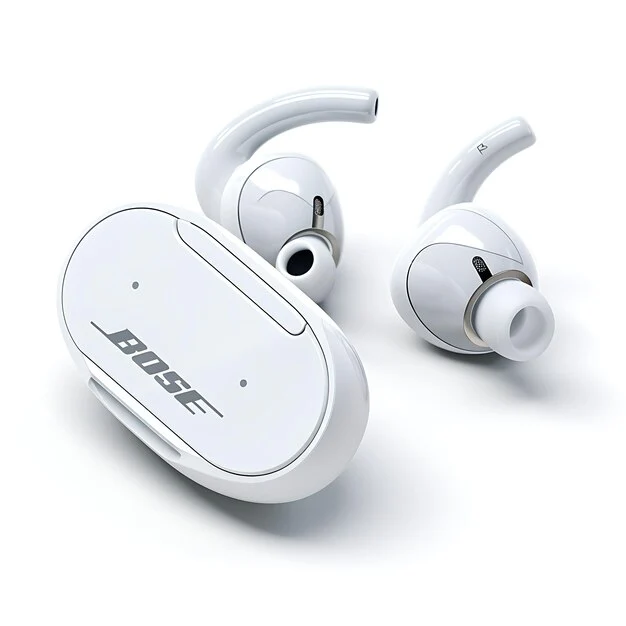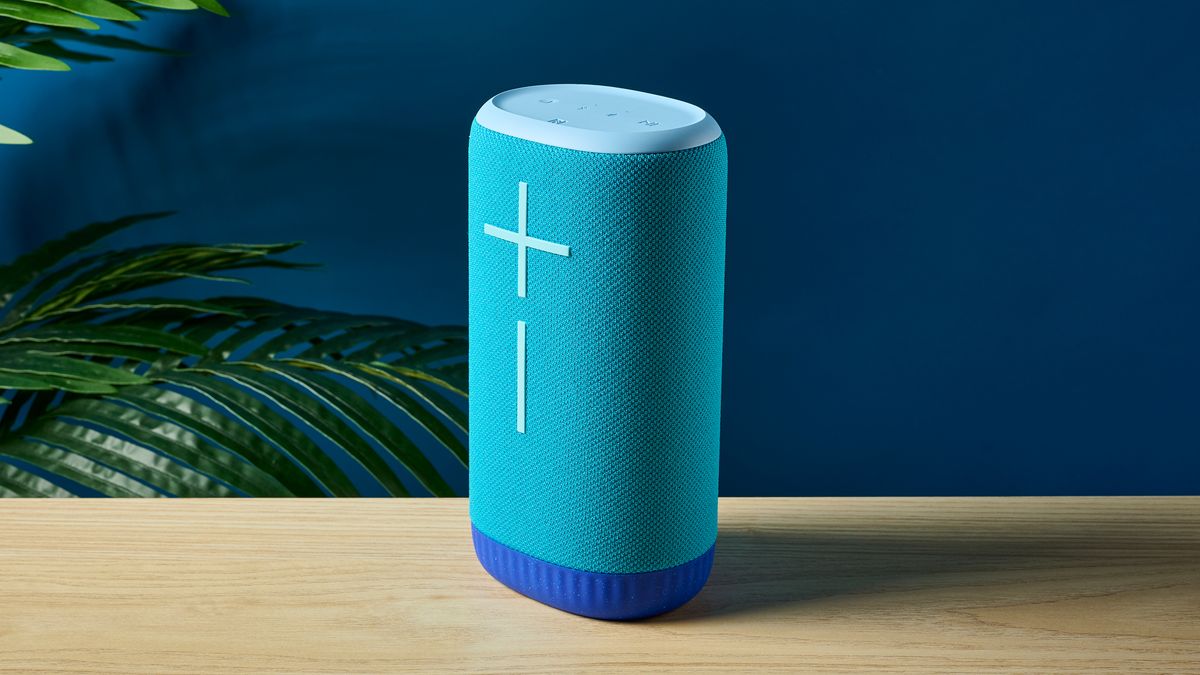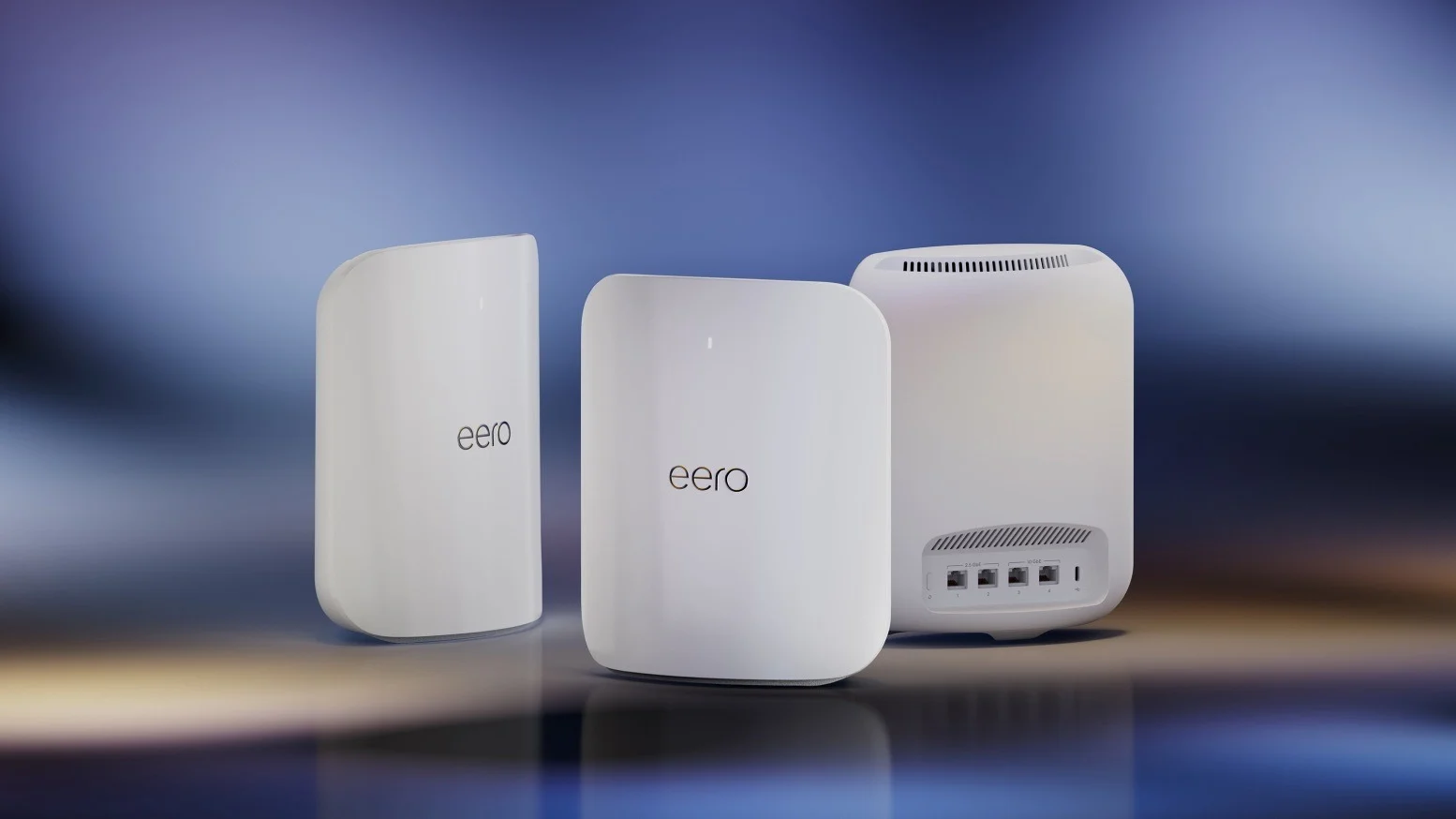These popular systems are easy to use, but the product lineup is confusing. Here’s how to choose the right one for your home.
THE PROMISE OF reliable Wi-Fi without the need for any technical knowledge or tinkering has turned Eero into a household name. Amazon’s Eero systems are some of the best mesh Wi-Fi routers you can buy, especially if you’re trying to keep costs as low as possible. But with an expanding lineup of similar-looking devices, shopping for Eero mesh routers is confusing. Should you buy three? Do you need Wi-Fi 6E or the latest Wi-Fi 7? Are subscriptions essential?
Don’t worry—in this guide, we’ll answer all your questions and help you find the right Eero system for your home. We’ve also rounded up details on how to extend your mesh, what the subscription service offers, and a few handy tips to get the most from your Eero. If this is your first time buying a mesh router, we recommend reading our guide on how to buy a router first.
What You Need to Know
Choosing an Eero
Every Eero system guides you through a simple setup process in the mobile app. But before you choose one, you need to figure out a few things.
What speed is your internet connection? Your internet service provider determines your maximum internet speed, and it's usually stated in megabits per second (Mbps) or sometimes gigabits per second (Gbps). The US average is around 200 Mbps. You want to ensure that the mesh you choose can manage your maximum speed. We have listed the top recommended speed of each Eero system below.
What is the square footage of your property? Every Eero device has a coverage rating. Eero routers and extenders start at 1,500 square feet each. A three-pack can cover up to 4,500 square feet. The Pro routers can cover 2,000 square feet each. You need to know the rough square footage of your home and backyard (if you want Wi-Fi there too). But bear in mind these are rough coverage estimates, and real-life performance will depend on where you place your Eero routers, your home’s construction along with signal-blocking obstacles, and how much wireless interference there is in the vicinity from other routers and gadgets (especially if you live in an apartment). We have listed the coverage of a three-pack of each Eero system below.
Best for Most People
Eero 6 Mesh System (3-Pack)

The Eero 6 routers and extenders are small, unobtrusive, shiny white boxes best placed in the open. Each unit has a USB-C port for power, and the routers have two Ethernet ports. The Eero 6 is a dual-band (2.4 GHz and 5 GHz) Wi-Fi 6 system, and a three-pack will be more than enough for most homes. There’s an Alexa skill for Eero, which enables you to use voice commands to pause the internet. Plus the Eero 6 router supports Thread and can pull double duty as a ZigBee smart home hub, allowing you to directly connect some smart lighting, smart locks, and other ZigBee devices. There's also Matter support, making it easy to set up and control third-party smart home devices. Put this together, and you can see why Eero is our mesh pick for smart homes.
Your quandary is how many Eero 6 units to buy. Small apartments and homes (1,500 square feet or smaller) may get away with a single router. If you need more coverage, but don’t care so much about the smart home connectivity or Ethernet ports, opt for a three-pack with two extenders. Folks with other devices that must plug in via Ethernet or several smart home devices should go for the three-pack with three routers.
For Faster Internet
Eero 6+ Mesh System (3-Pack)
The Eero 6+ offers everything the regular Eero 6 does, including easy setup, a similar compact design, and robust smart home support. It's also a dual-band (2.4 GHz and 5 GHz) Wi-Fi 6 system, but it supports wider 160-Mhz channels and offers faster top speeds than the regular Eero 6. A three-pack will easily blanket the average home with a strong Wi-Fi signal, but you may run into limitations if there are several people online at once.
Your options for the Eero 6+ boil down to how many units you need. You can buy a one-, two-, or three-pack of Eero 6+ routers with the same capabilities and two Ethernet ports apiece.
Upgrade Pick
Eero Pro 6E Mesh System (3-Pack)
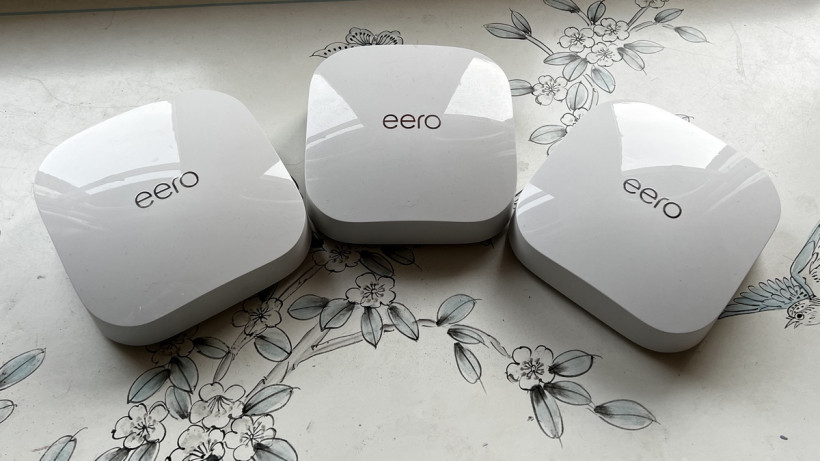
Folks with larger properties or above-average demands should consider the Eero Pro 6E. This tri-band mesh supports 2.4-GHz, 5-GHz, and the newly opened 6-GHz band. Theoretically, the 6-GHz band enables faster speeds and reduced latency for devices that support Wi-Fi 6E (read our Wi-Fi 6E explainer for more). The 6-GHz band can also work as a backhaul to speed traffic between your routers. While the Pro 6E (7/10, WIRED Recommends) offers reliably speedy performance, the main weakness of the new 6-GHz band is range. The 6-GHz frequency does not reach as far or penetrate through obstacles as well as 5 GHz or 2.4 GHz. Still, while all the other Eero systems can connect more than 75 devices, Eero says the Pro 6E can handle more than 100.
Your choice remains one-, two-, or three-pack systems of identical routers with two Ethernet ports apiece. Note that the top speed below was calculated by combining a gigabit wired connection and up to 1.6-Gbps wireless connection.
Future-Proof Pick
Amazon Eero Max 7
While this is another tri-band mesh, like the Pro 6E, it is Eero’s first Wi-Fi 7 release. That means super fast speeds and lower latency, but also features like Multi-Link Operation (MLO), enabling Wi-Fi 7 devices to connect on more than one band simultaneously (read our Wi-Fi 7 explainer for more). The Eero Max 7 (7/10, WIRED Review) has an all-new tower shape that allows for improved antenna design and more power for better range, and it leaves room for four Ethernet ports, two rated at 10 Gbps and two at 2.5 Gbps. Eero says the Max 7 can handle more than 200 devices. We encountered some teething problems, and few folks will have enough Wi-Fi 7 devices, a fast enough internet connection, or a large enough home to justify an expense this big.
You can snag one, two, or three units, but, since it is fully backward compatible, you can always mix and match with your existing Eero setup and just grab a single Max 7 to act as your gateway. The presence of two 10 Gbps ports makes this an excellent system for wired backhaul.
What About Older Eero Systems?
We Don't Recommend Them
While the Eero Pro 6 has been discontinued, it is still worth buying if you can find it. Like the Eero 6+, it can make full use of connections up to 1 Gbps, but each Pro 6 router offers coverage of up to 2,000 sq. ft. Because this is a tri-band system, with one 2.4-GHz band and two 5-GHz bands, it can also manage more traffic gracefully. One of the 5-GHz bands can be used for backhaul (the routers sending traffic back and forth), leaving the other free for connected devices.
You may also still be able to buy the basic Eero (one-pack for $40)—a dual-band (2.4 GHz and 5 GHz) Wi-Fi 5 system that’s good for speeds of up to 350 Mbps and 50+ connected devices. A three-pack can cover 4,500 square feet. This might be enough for folks with very limited demands, but we don't think anyone should be buying a mesh that doesn't at least support Wi-Fi 6. The difference in price between this and the Eero 6 is so small that it's always worth going for the Eero 6.
If you have an older Eero system, don’t throw it away, because you can always use it to extend a newer Eero mesh system. Just make sure you use the newest Eero router as your gateway (the router that connects to the internet coming into your house via Ethernet).
Types of Eero Systems
Mix and Match
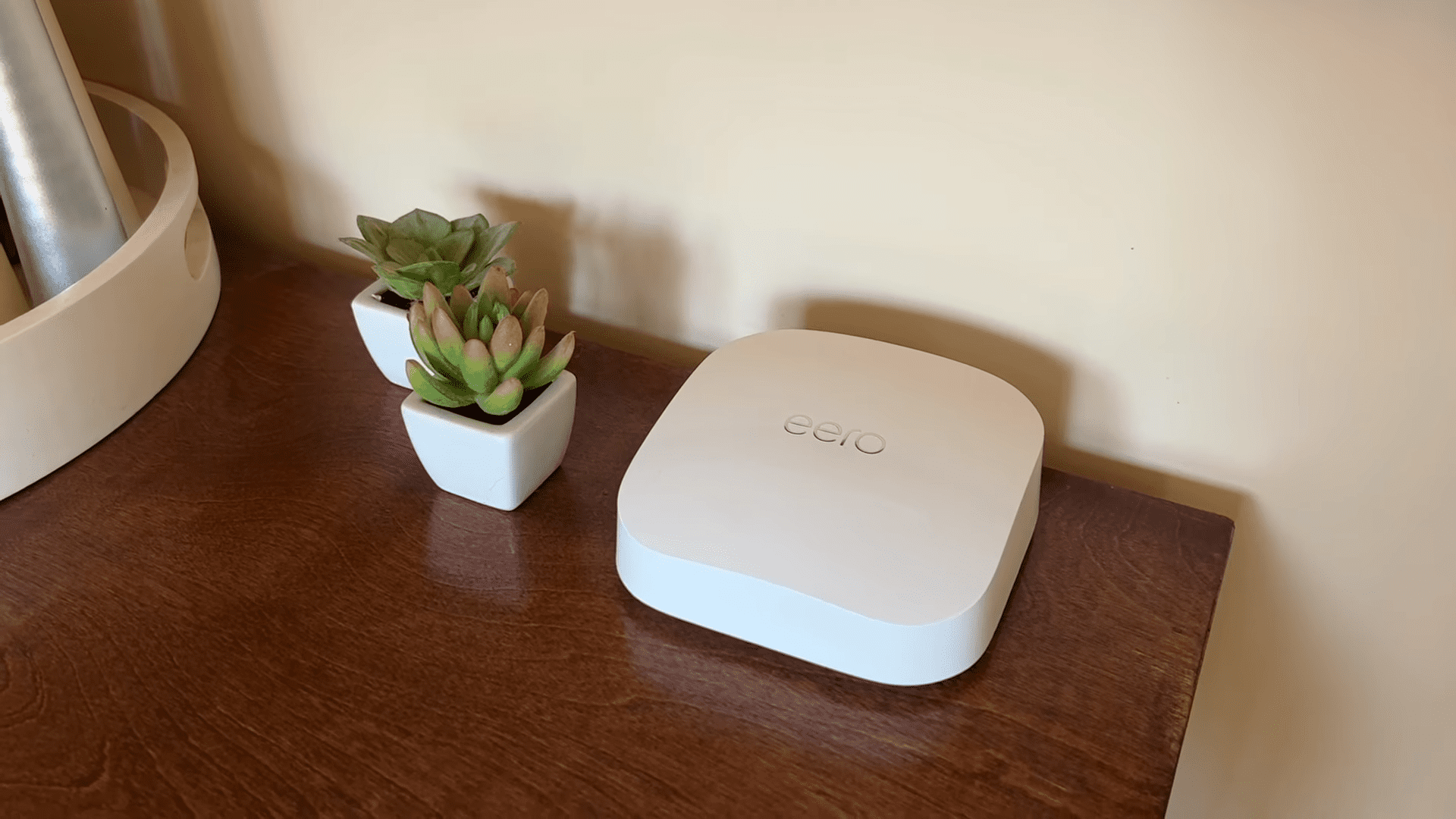
Eero devices come in three main types
Eero routers or gateways can connect to the internet coming into your home, each other, or other devices via Ethernet cable. They offer at least 1,500 square feet of Wi-Fi coverage and act as smart home hubs.
Eero extenders or add-ons connect wirelessly to your gateway and extend your Wi-Fi coverage by at least 1,500 square feet, but they don’t have any Ethernet ports or the ability to act as smart home hubs.
Eero beacons are small devices that plug directly into an outlet and expand your Wi-Fi coverage by up to 1,500 square feet, but they are limited (dual-band Wi-Fi 5 offering speeds up to 350 Mbps).
What Is Eero Built-In?
Connecting the Broader Amazon Family
Amazon has started building Eero compatibility into some of its other devices. Some Echo speakers can act as Eero mesh Wi-Fi extenders. All of the Eero systems we recommend are compatible, and the following speakers can extend your Eero mesh coverage by up to 1,000 square feet, offer speeds up to 100 Mbps, and connect up to 10 devices.
-
Echo Dot With Clock (5th Gen)
-
Echo Dot (5th Gen)
-
Echo (4th Gen)
We have a step-by-step guide on how to extend your Eero mesh with Amazon Echo speakers to help you get started. The Ring Alarm Pro Base Station ($250) also has an Eero Built-in Wi-Fi 6 router capable of speeds up to 900 Mbps and coverage up to 1,500 square feet.


